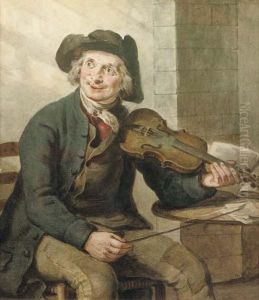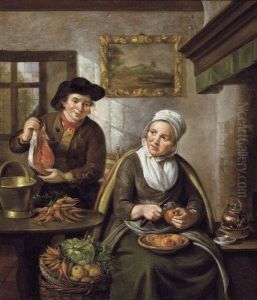Jan Adriaen Antonie De Lelie Paintings
Jan Adriaen Antonie de Lelie was a Dutch painter born in 1755 in Tilburg, Netherlands. He is known for his portraits and genre scenes, as well as being a copyist of the works of old masters. De Lelie's artistic journey began under the guidance of a local painter in Tilburg, after which he moved to Amsterdam to further his training and career. In Amsterdam, he became a student of Jurriaan Andriessen, a decorative painter known for his work in theater and interior decoration, which likely influenced De Lelie's sense of composition and attention to detail.
During the late 18th century, De Lelie's career flourished in Amsterdam. He became well-regarded for his portraiture, capturing the likeness and personality of the Amsterdam elite. His portraits were appreciated for their elegance and accurate depiction of his subjects. Aside from portraiture, De Lelie also painted genre scenes, illustrating daily life with a similar finesse and attention to the human figure. Additionally, he was an adept copyist and was commissioned to replicate paintings by Dutch masters, a common practice at the time for artists to study technique and for patrons to acquire desirable artworks that were otherwise inaccessible.
De Lelie's work serves as a reflection of the artistic trends and societal interests of his time, especially within the context of Amsterdam's cultural scene. His portraits not only show the fashion and interiors of the era but also provide insight into the social hierarchies and the bourgeoisie's self-image. De Lelie's genre scenes offer a window into 18th-century Dutch society, with its emphasis on domestic life and moral values.
The artist's later years were marked by continued success in his field, and he remained active as a painter until his death in 1820. Today, Jan Adriaen Antonie de Lelie's works are part of various collections, including museums in the Netherlands, where they continue to be studied and appreciated for their contribution to Dutch art history.

